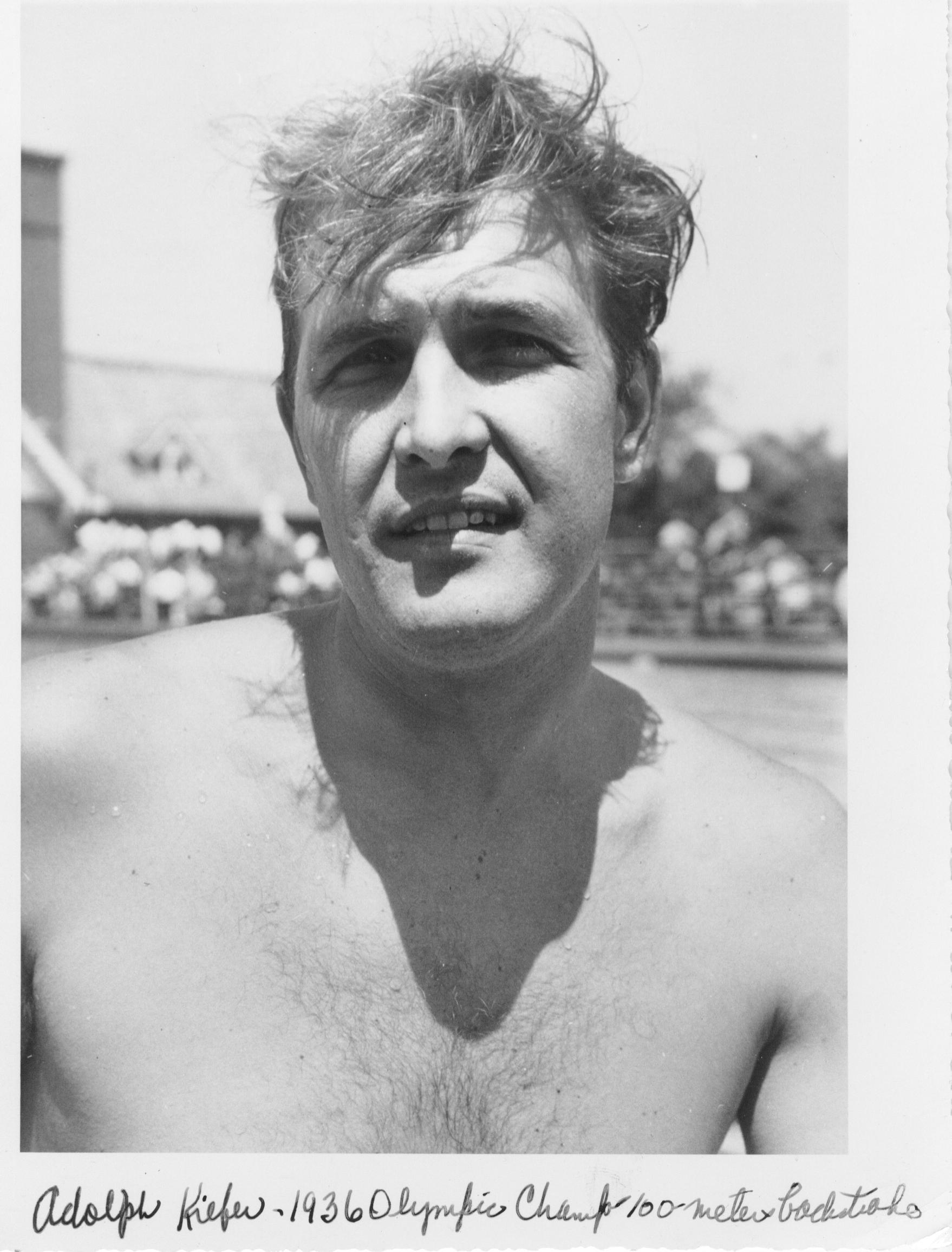
Adolph Kiefer (USA)
Honor Swimmer (1965)
FOR THE RECORD: OLYMPIC GAMES: 1936 gold (100m backstroke); WORLD RECORDS: every backstroke event; U.S. NATIONAL RECORDS: every backstroke event, 3-stroke individual medley; Officer in charge of swimming for U.S. Navy during WWII; Advisor to President’s Council on Physical Fitness.
Adolph Kiefer was the first man in the world to swim 100 yds. backstroke under 1 minute. His backstroke records stood for 15 years, which is why swimming people universally acclaim him the greatest backstroker ever. It was in 1936, while a 17-year-old schoolboy, he first earned huzzahs from the athletic fraternity by establishing a backstroke swimming record to win an Olympic gold medal in Berlin. If wider acclaim eluded him then, the oversight can be attributed to the presence of Jesse Owens and the absence of “Life” magazine.
Many major headlines blared his name in the decade to follow because Kiefer went on to set world records in every backstroke event in the books and won national championships in the 3 stroke individual medley as well. None of his backstroke records were broken until 1950, four years after his retirement from competitive swimming.
Although World War II pre-empted his chances to further distinguish himself in Olympic competition, the Kiefer name continued to be news. He conducted a global survey of shipwrecks and documented the enormous and unnecessary toll of GI deaths resulting from inadequate swimming instruction. A shocked corps elevated a young Lt. Kiefer to officer in charge of swimming for the entire U.S. Navy. He revamped the entire instruction program, trained or retrained 11,000 Navy swimming instructors.
Today Adolph Kiefer, at 46, is a few pounds heavier than his best swimming weight and the hair has thinned a bit. But the enthusiasm and zeal with which he assaults the developments of daily business seem greater, if this is possible.
“I sometimes believe industry stamps a man physically fit if his handshake is firm, his head steady enough to do battle with a three-martini lunch, and his bottom hard enough to sit long hours behind a desk,” says Adolph Kiefer.
“The key to physical fitness in this country is the woman of the house. It is she who motivates the children to forsake the TV set and empty the garbage, and it is she who convinces her husband to clean out the garage and repaint the living room ceiling. And it is she, through her own trim example, who can effect a family fit for a good life.”
“Americans are generally very conscientious and attentive when it comes to business and religious responsibilities, but is there not such a thing as physical morality?” Kiefer attaches great importance to home exercise, but even more to prospective industrial fitness programs. He has flown more than 60,000 miles in the last ten months to acquaint business leaders with his ideas for industry-sponsored fitness development.
He has been a prominent figure in the swimming industry since World War II and a liaison between the industry and competitive swimming. His activities pursuant to the promotion of physical fitness have earned him the role of advisor to the President’s Council on Physical Fitness.
